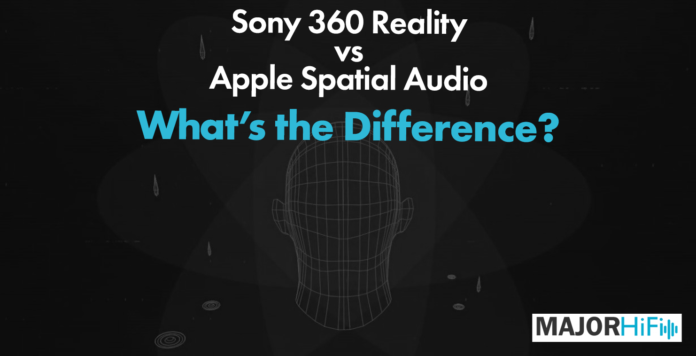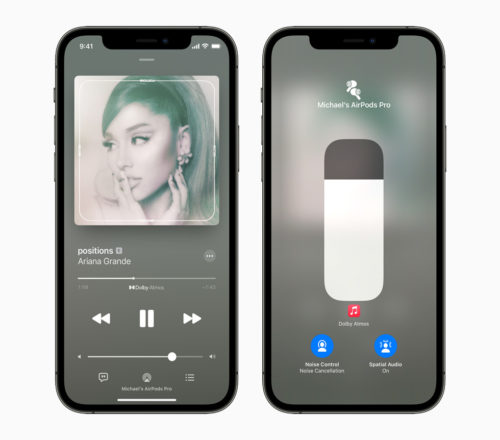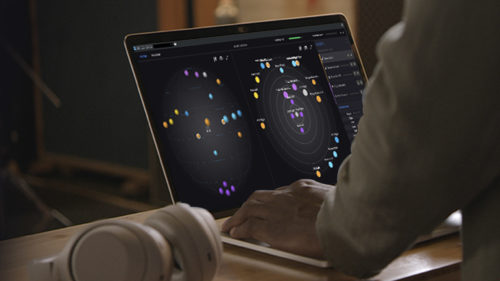Spatial audio has taken over a lot of the conversation in 2021. With the introduction of Apple’s new spatial audio features, and Dolby Atmos becoming more common in music streaming, this new experience is helping to shape the future of mainstream audio entertainment. However, it’s important to point out that Apple wasn’t the first to innovate this experience. For two years, Sony has built their own spatial audio feature exclusively for their popular line of wireless products like the WH-1000XM4. Going by 360 Reality Audio, Sony has crafted their own spatial audio experience that’s unique to the products they support.
Some listeners that are new to spatial audio might see Apple and Sony’s contributions, and think they’re the same experience, so I tried both in order to understand exactly where they differ. I also wanted to see which one was more worthwhile, as although spatial audio is becoming more consumer-friendly, you’ll still be spending a bit of money to hear it. With that in mind, you want to make sure you’re getting to hear its intended effect properly, and that’s exactly what I’m here to discern.
Compatibility
Determining how you can listen to both platforms can get quite complicated. With Sony, you simply have a list of compatible headphones and true wireless earphones that support their 360 Reality playlists. This included strictly Sony products, but it covers everything from the new WF-1000XM4 to even the high-end Z1R headphones. To get the most out of 360 Reality Audio, Sony weirdly asks you to take pictured of your ears and upload them to their headphones app, so that the experience is more personalized and effective to the angle of your ears. It’s odd, but you get a sense that the experience belongs to you, which I think is interesting. It also makes me more excited to see how they use this technology to further upgrade the ability of 360 Reality Audio using this kind of research.
You’ll also only be able to listen to 360 Reality Audio using specific streaming services, such as Tidal, Deezer, Amazon Music Unlimited, and Nugs.net. Here you have access to a limited selection of albums. My personal favorites to listen to are Paul Simon’s self-titled album, “Kind of Blue” by Miles Davis, and “Space Oddity” by David Bowie. On the Apple side, IOS 15 brought spatial audio to every iPhone, making it theoretically possible to use it with any pair of headphones. Even though it’s possible, Apple urges you to stick to either the AirPods Pro or AirPods Max in order to get the intended experience. This appears a lot more limiting, but I’ve used a couple of headphones with Apple’s spatial audio, and the experience varied from well-executed to only just functional.
As far as services are concerned, Apple’s spatial audio works best with Apple Music due to the addition of Dolby Atmos support. However, iPhone users can simply activate spatial audio while using AirPods and use it with any application within IOS. I spent time using Apple’s spatial audio with Spotify and even Youtube, which is a big advantage over Sony’s more limited usability.
As for their library, Apple Music has a much more vast selection of albums mixed specifically for spatial audio with Dolby Atmos, and it’s updated all the time. Some great additions are the new super deluxe mixes from “Let It Be” by The Beatles, “Screen Violence” by CHVRCHES, and the score from “The Social Network” by Trent Reznor and Atticus Ross. For me, this is Apple’s biggest advantage right now over Sony’s 360 Reality Audio. Also, the fact that you can watch Apple TV with Dolby Atmos is a huge benefit for watching movies and TV, which Sony headphones haven’t competed with yet outside of certain Sony speakers and the PS5’s Pulse headset for gaming.
Sound Difference
When it comes to these new spatial audio features, of course, the most important aspect to consider is how they compare to each other sonically. With Sony 360 Reality Audio I mainly stuck with the WH and WF-1000XM4 using Tidal for my testing, while for Apple spatial audio I used both Apple Music and Spotify with the AirPods Pro. Most of my thoughts on Apple spatial audio have been summed when I initially wrote about my impressions on IOS 15. In the article, I pointed out how spatial audio added better height and dimension to the soundstage of the AirPods Pro. However, I found it to work more as a correction to the earbuds’ limited spatial imaging rather than coming close to a true Atmos experience. I also found the head-tracking very gimmicky, and something I couldn’t see myself spending a lot of time with.
Compared to Sony 360 Reality Audio, Apple’s spatial sound is a lot more floaty and forward-facing, while its competition features a more wrap-around, orb of sound that encapsulated your headspace. Even though both functionally virtualize the feeling of spaciousness, the 360 Reality Audio feels the most natural of the two, and its character is definitely improved by whatever changes you want to make with EQ. Apple is a lot less personalized here, but you can still consistently perceive the music as outside of your head, although directionally I believe Sony has the upper hand so far. There just feels like there are more capabilities to capture spatiality in their object-based algorithm, and it’s definitely noticeable when listening to very spacious tracks.
Summary
Listening to both experiences for a long period of time made me more excited for the future of spatial audio. The way I see it, both Sony and Apple have their advantages when it comes to the usability of this feature. For instance, I think the way 360 Reality Audio performs with music is a bit more impressive than Apple spatial audio in its current form, even with its limited library. However, Apple’s support of Dobly Atmos makes spatial audio more effective when watching movies, TV, or a gaming app. Both platforms have the opportunity to change the way we experience audio in any medium, and it’s one of the most interesting innovations happening now in the headphone world.
MAJORHIFI may receive commissions from retail offers.










